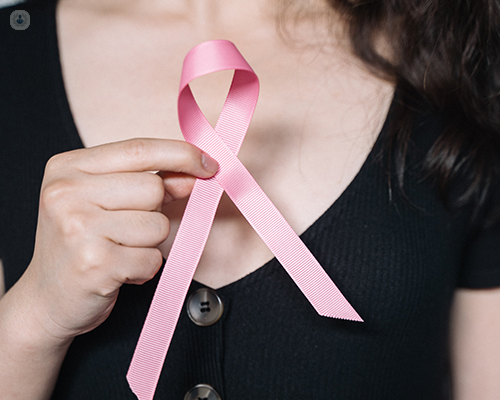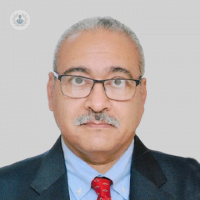How to decrease postoperative infection risk following breast reconstruction surgery
Autore:Breast reconstruction is a complex procedure that can restore confidence and comfort for many women after mastectomy or trauma to the breast(s). However, like any surgery, it carries the risk of complications, including postoperative infection.
Mr Mohamed Shaaban, consultant in general, laparoscopic, and breast surgery, provides an expert guide to the risks, prevention strategies, and early signs of infection following breast reconstruction.

What are the signs of infection after breast reconstruction?
Infections after breast reconstruction typically occur within a few weeks of surgery, but can develop later in some cases. The most common signs include:
- redness or warmth in the area surrounding the surgical site
- increasing pain or tenderness
- discharge from the incision site (cloudy or yellow)
- delayed wound healing, with the incision site appearing worse over time
If the infection becomes systemic, a fever above 38°C or chills may also appear.
Does the type of breast reconstruction affect my risk of infection?
Yes, the type of breast reconstruction can determine the risk of infection.
Implant-based reconstruction, which involves placing saline or silicone implants to reconstruct the breast, carries a slightly higher risk of infection. This is because implants are foreign objects in the body, and any contamination during surgery or postoperative care can lead to complications.
Conversely, autologous tissue reconstruction involves using tissue from another part of your body, such as the abdomen, back or thighs, to reconstruct the breast. This method avoids the risks associated with implants, but it involves larger surgical areas, requiring longer recovery times. As a result, the risk of wound-related complications may increase.
In addition to the type of breast reconstruction, individual risk factors, such as pre-existing health conditions like diabetes or autoimmune conditions, can also play a significant role.
What role does surgical technique play in preventing infections?
The expertise and precision of your breast surgeon are critical in preventing infections. A meticulous surgical technique helps minimise tissue trauma, ensures proper wound closure, and reduces the likelihood of fluid buildup that can lead to infection.
Surgeons follow strict protocols to maintain a sterile environment to eliminate bacteria. In addition, some surgeons also use advanced measures like antibiotic irrigation during surgery, while others employ techniques like layered wound closure to strengthen healing. In some cases, drains may be placed to remove excess fluids from the surgical site.
Can lifestyle factors impact my risk as well?
Your lifestyle before and after surgery significantly influences your risk of developing an infection. Before breast reconstruction, consider the following:
- Smoking cessation: Smoking reduces blood flow and oxygen delivery to tissues, which delay wound healing and increase infection risk. Quit smoking at least 6 weeks prior to surgery.
- Weight management: Excess body fat can interfere with blood circulation and immune response. Maintaining a healthy weight through balanced nutrition and regular exercise reduces strain on surgical sites and improves blood circulation your body’s ability to recover.
- Wound care: After surgery, follow all postoperative wound care instructions, which might include keeping the area clean and dry, avoiding strenuous activities, and wearing any prescribed compression garments.
Your surgeon will provide specific recommendations tailored to your individual situation, ensuring your recovery is as smooth as possible.
What should I do if I suspect an infection following breast reconstruction?
It’s important to act promptly if you suspect an infection following breast reconstruction. Contact your surgeon as soon as possible to discuss your symptoms.
Your surgeon will advise you to come in for an examination, blood tests, or imaging to assess the situation. In addition, they will also clean and dress the wound, or drain any accumulated fluid.
In most cases, infections can be treated effectively with antibiotics, either oral or intravenous. In severe cases, if an implant is involved and the infection persists, removal may be necessary, although this is rare.
Professional evaluation and guidance are crucial for safe and effective treatment.
To book an appointment with Mr Mohamed Shaaban, head on over to his Top Doctors profile today.


